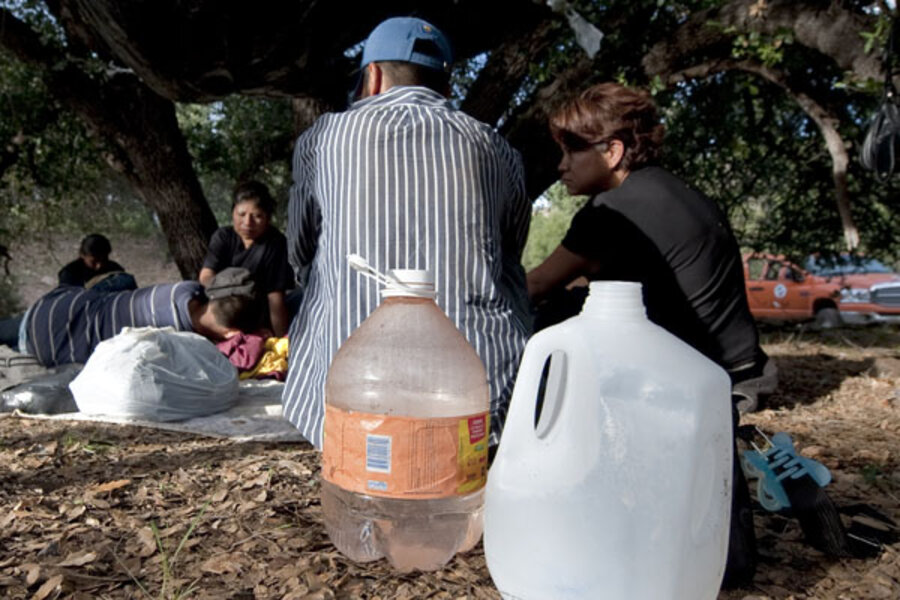Border deaths for illegal immigrants hit record high in Arizona sector
Loading...
| Tucson, Ariz.
The discovery of record numbers of bodies along the Tucson sector of the US-Mexico border suggests that border crossings for illegal immigrants are becoming deadlier as heightened security forces migrants into remoter and more forbidding areas.
In fiscal 2010, which ended Sept. 30, authorities reported fewer border crossings overall. But the 252 bodies recovered surpassed the previous record of 237 in fiscal 2007.
“People go through areas that are harsher, where a lot of people are getting hurt and dying,” says Raquel Rubio-Goldsmith, coordinator of the University of Arizona’s Binational Migration Institute.
A record-breaking heat wave last summer could also have played a role. Moreover, there are more border patrol agents on the ground, and some of these agents patrol more isolated spots, increasing the likelihood of finding bodies, Ms. Rubio-Goldsmith says.
Because the border is fortified with manpower and high-tech surveillance, smugglers do whatever it takes to get their human cargo into the country and collect profits – including going into far-flung regions. There, they sometimes abandon sick or weary border-crossers who can’t keep up with a group, says Colleen Agle, a border patrol agent in the Tucson sector, which covers most of the Arizona international line.
“Smugglers do not properly educate people about the difficulty of crossing and dangers of the desert,” she adds. “Instead of telling people that the trek could take days, they will often suggest that after a few hours’ walk, a car will take them to Tucson or Phoenix.”
The high number of deaths comes amid a drop in border apprehensions in the sector – to 241,000 in fiscal 2009 from 616,000 in fiscal 2000. The statistics, coupled with studies, suggest that a fortified border and an ailing US economy are keeping people out.
But Rubio-Goldsmith is still trying to confirm why deaths are rising as border-crossing decline. “If it’s true that there are fewer people coming, why is it that the number of deaths has not gone down?” she asks. “We’re trying to find out why that is.”
Just how many people die along the entire Southwest border is difficult to determine, but the border patrol alone found 417 bodies in fiscal 2009. Most are found in Arizona’s deserts and mountains. The Binational Migration Institute in 2007 released a study showing that strengthened enforcement had a “funnel effect” that shifted the flow of illegal border traffic from urban areas in California and Texas to Arizona. The institute noted a 20-fold hike in deaths at the Tucson morgue between 1990 and 2005.
Human rights organizations say border and immigration policies must change to stop people from dying.
The loss of life will continue as long as efforts to “militarize the border” keep going forward, says Kat Rodriguez, a spokeswoman for the Coalición de Derechos Humanos, a human rights group that tracks the fatalities.
The United States and Mexico could stop people from dying with an agreement that benefits both countries, says Rubio-Goldsmith. “It’s ridiculous that anybody has to die on that border…. We have to find some rational way to go about this. If they were able to sit down and negotiate NAFTA, they’re able to sit down and negotiate immigration.”





